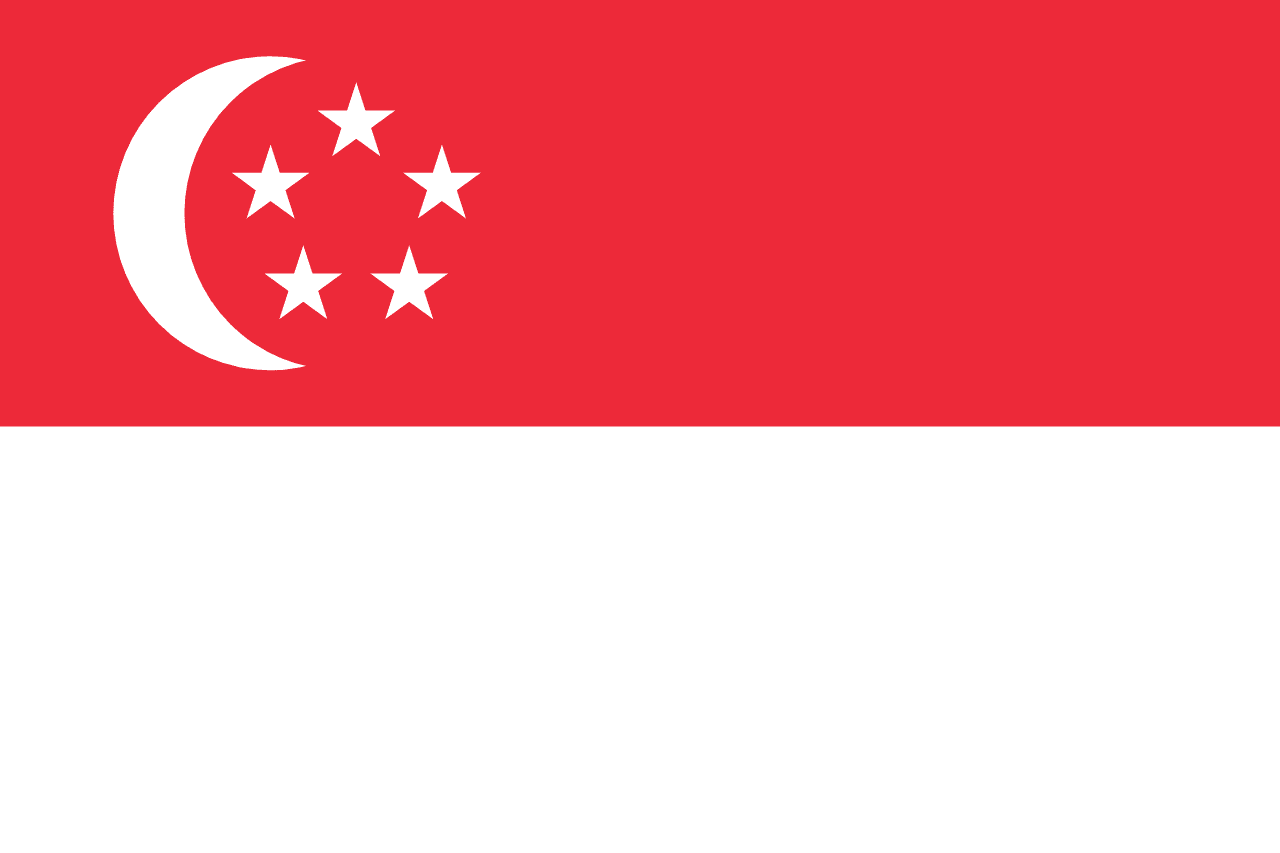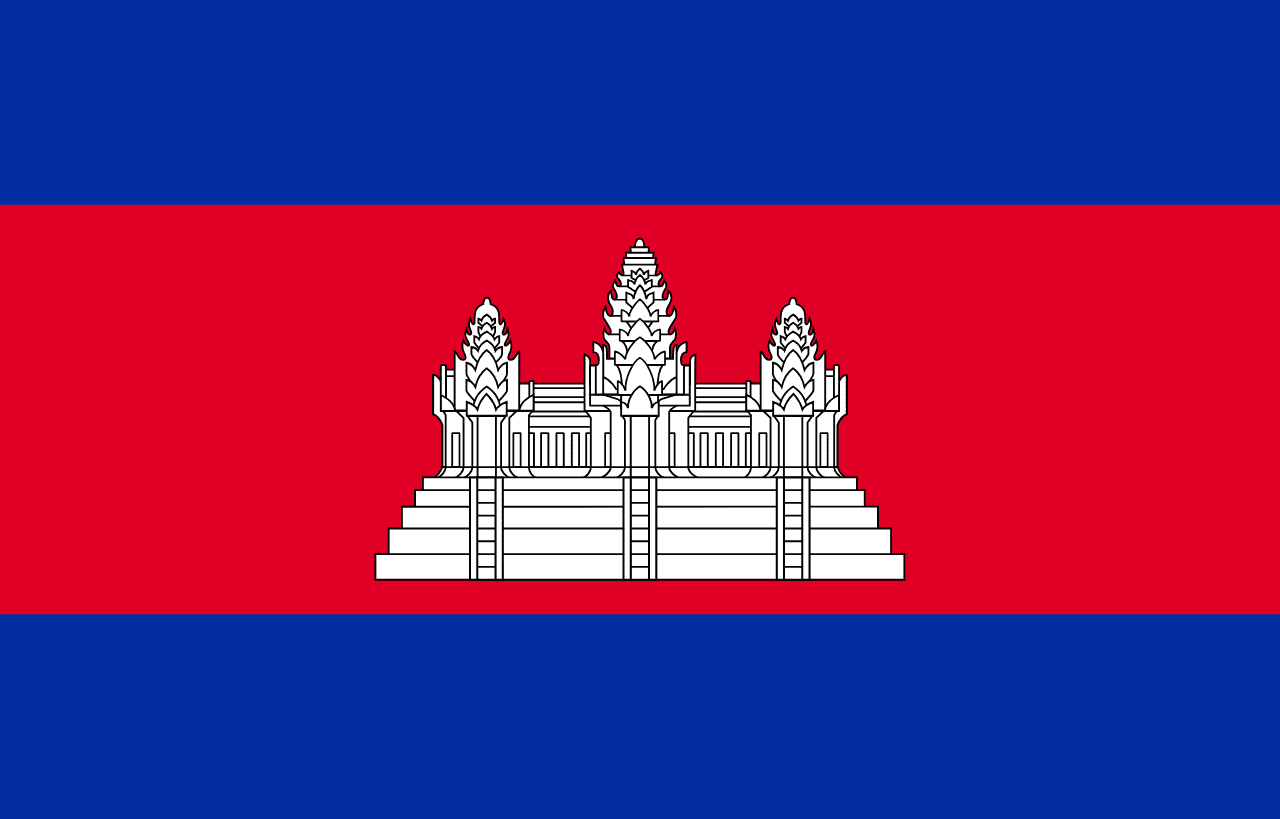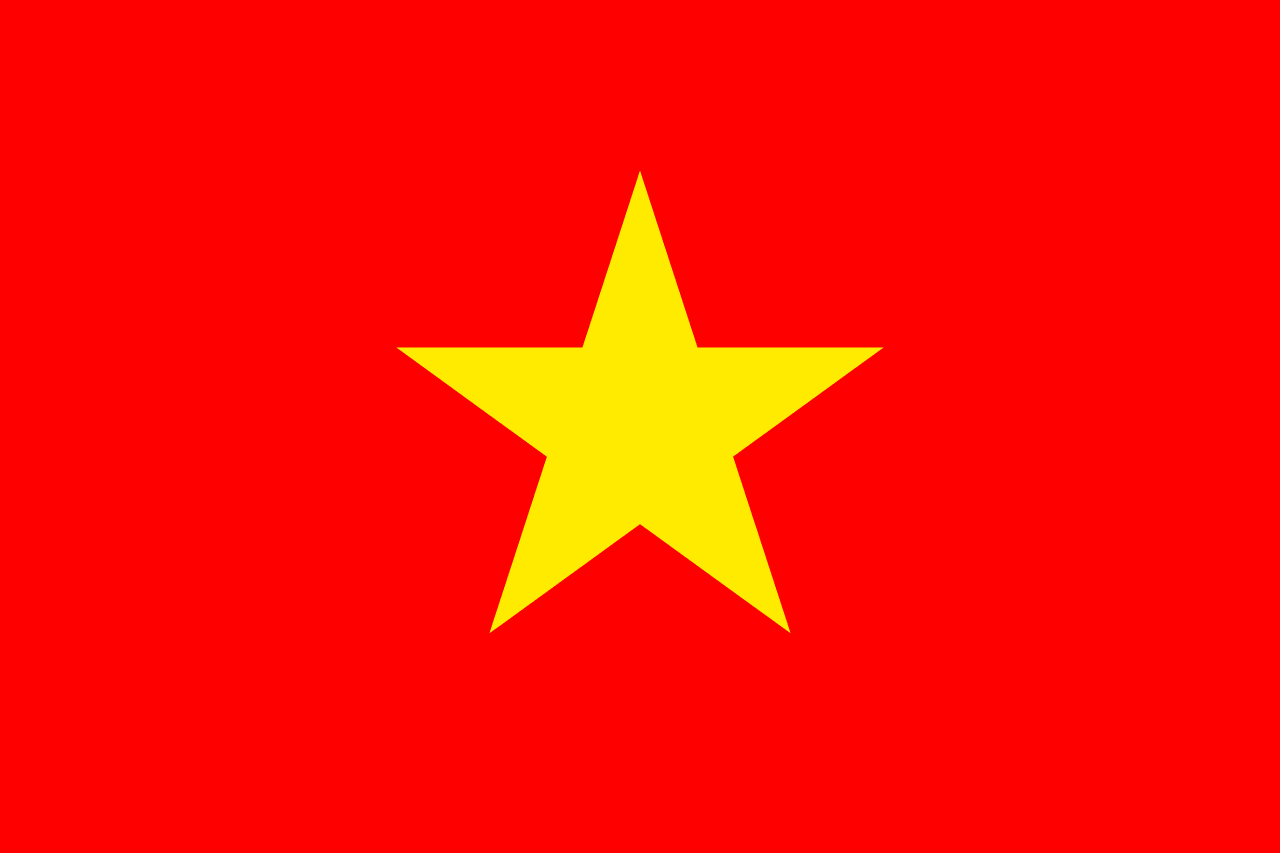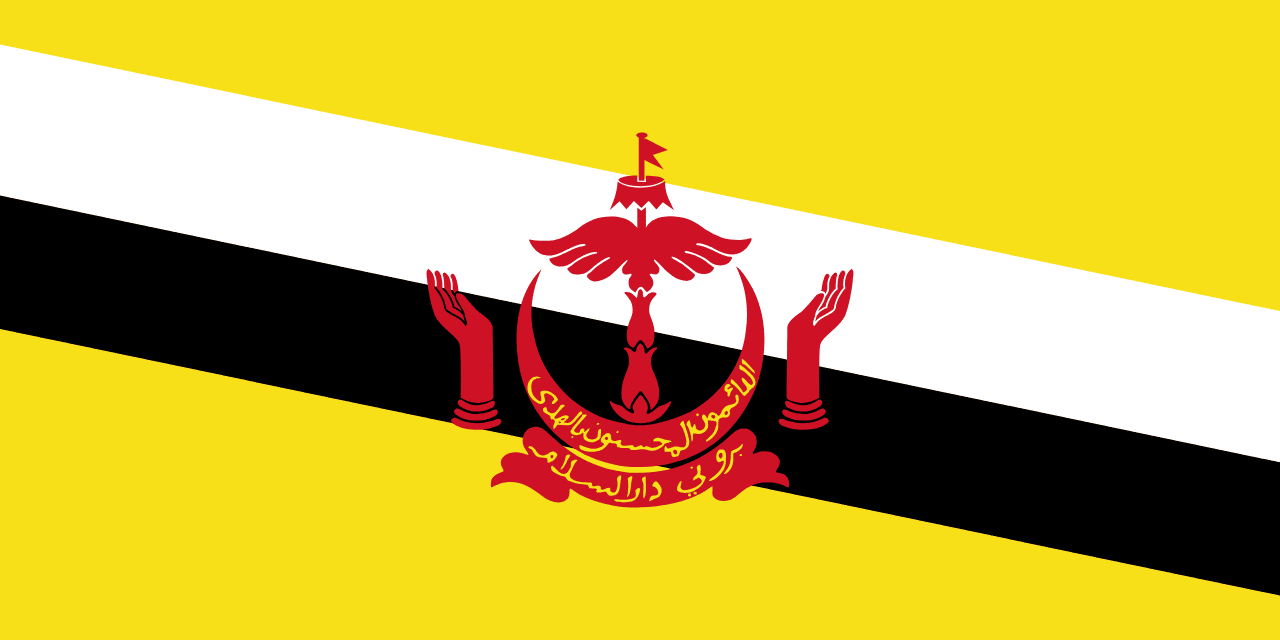Malaysia Flag Meaning
Fourteen alternating red and white stripes with a blue canton containing a yellow crescent and 14-pointed star, representing the federation of Malaysian states and territories united under Islam and royal authority.
- Continent
- Asia
- Adopted
- 1963
- Ratio
- 1:2
- Colors
- red, white, blue, yellow
- Designer
- Mohamed Hamzah

Symbolism
14 Red and White Stripes: Represent the equal status of the 13 states and the federal territories of Malaysia, symbolizing the unity and equality of all components of the Malaysian federation.
Red Stripes: Symbolize the courage and determination of the Malaysian people, representing the strength and bravery needed to build and maintain the nation.
White Stripes: Represent the state of Malaysia itself and symbolize peace, harmony, and the unity among Malaysia's diverse ethnic and religious communities.
Blue Canton: Represents the unity of the Malaysian people and their relationship with the Commonwealth, acknowledging Malaysia's historical ties to Britain while asserting independence.
Yellow Crescent and Star: The crescent represents Islam as the official religion of Malaysia, while the 14-pointed star represents the unity of the 13 states and federal territories under the federal government.
History
- 1946-1957: The Federation of Malaya used various flags during the transition from British colonial rule to independence, developing the basic stripe pattern that would influence the later Malaysian flag.
- August 31, 1957: Malaya gained independence with a flag featuring 11 stripes and 11-pointed star, representing the 11 states of the peninsula at that time.
- September 16, 1963: Malaysia was formed by the union of Malaya, Singapore, Sabah (North Borneo), and Sarawak, and the flag was modified to 14 stripes and 14-pointed star.
- August 9, 1965: Singapore separated from Malaysia, but the flag design remained unchanged with 14 stripes now representing the 13 states plus the federal territories of Kuala Lumpur.
- 1974: Kuala Lumpur became a federal territory, and later Labuan (1984) and Putrajaya (2001) were added, with the 14th stripe representing all federal territories collectively.
- 1997: Prime Minister Mahathir Mohamad officially named the flag 'Jalur Gemilang' (Stripes of Glory), giving it a distinctly Malaysian identity and encouraging national pride.
- 1963-Present: The flag has remained unchanged for over 60 years, representing remarkable stability and continuity in Malaysian national identity despite political and social changes.
Trivia
- Malaysia's flag is called 'Jalur Gemilang' meaning 'Stripes of Glory' in Malay, officially named by Prime Minister Mahathir Mohamad in 1997.
- The flag designer, Mohamed Hamzah, was a 29-year-old architect who won a national design competition, and his design has remained unchanged since 1963.
- The 14-pointed star is unique among world flags for having exactly 14 points, specifically chosen to represent Malaysia's federal structure.
- Malaysia celebrates Flag Day on September 16, coinciding with Malaysia Day, which commemorates the formation of the Malaysian federation in 1963.
- The flag survived Singapore's separation in 1965 without modification, with the 14th element shifting from representing Singapore to representing federal territories.
- The flag appears on Malaysian ringgit banknotes alongside portraits of Malaysia's first Prime Minister Tunku Abdul Rahman and other founding fathers.
- During the 1998 Commonwealth Games in Kuala Lumpur, the Malaysian flag gained international prominence as the host nation showcased its federal diversity.
- The flag protocol requires it to be raised at dawn and lowered at dusk, and during the monthly full moon, it should be illuminated throughout the night.
- Malaysia's flag is one of the few national flags that explicitly represents a federal structure through its stripe count and star points.
- The flag appears prominently during Hari Merdeka (Independence Day) on August 31 and Malaysia Day on September 16, the two most important national celebrations.
- Traditional Malaysian batik patterns often incorporate the flag's colors and design elements, making it a part of Malaysia's cultural and artistic heritage.
- The flag flies over the Petronas Twin Towers in Kuala Lumpur, once the world's tallest buildings, symbolizing Malaysia's economic development and modernization.
- Malaysia's multi-ethnic society is reflected in flag ceremonies where the national anthem is sung in Malay while representing Malay, Chinese, Indian, and indigenous communities.
- The flag appears at ASEAN meetings where Malaysia plays a founding role in Southeast Asian regional cooperation and economic integration.
- During the COVID-19 pandemic, Malaysian medical workers often wore flag patches as symbols of national service and solidarity in fighting the virus.
Related Countries

Singapore
Asia
A bicolor flag with a red upper half and white lower half. In the upper hoist is a white crescent moon beside five white five-pointed stars arranged in a circle. The flag symbolizes Singapore’s ideals of unity, progress, and multicultural harmony.

Cambodia
Asia
Three horizontal stripes of blue, red (double width), and blue with a white depiction of Angkor Wat temple in the center, representing the nation, the king, and the sacred temple that symbolizes Cambodia's glorious past and cultural heritage.

Vietnam
Asia
A red field with a large yellow five-pointed star in the center, representing the blood shed for independence and the unity of workers, peasants, intellectuals, youth, and soldiers under Communist Party leadership in the struggle for national liberation and socialist construction.

Thailand
Asia
Five horizontal stripes with red at top and bottom, white in the second and fourth positions, and blue in the center, representing the nation and the people, the purity of Buddhism, and the monarchy, designed by King Rama VI during World War I to show solidarity with the Allies.

Brunei
Asia
A yellow field with two diagonal stripes of white and black, featuring the national coat of arms in red in the center, representing the Sultan's sovereignty, the state's prosperity, and the nation's commitment to peace and Islamic values.

Indonesia
Asia
Two horizontal stripes of red over white, known as 'Sang Saka Merah-Putih' (The Sacred Red and White), representing the courage and purity of the Indonesian people and their struggle for independence from colonial rule.